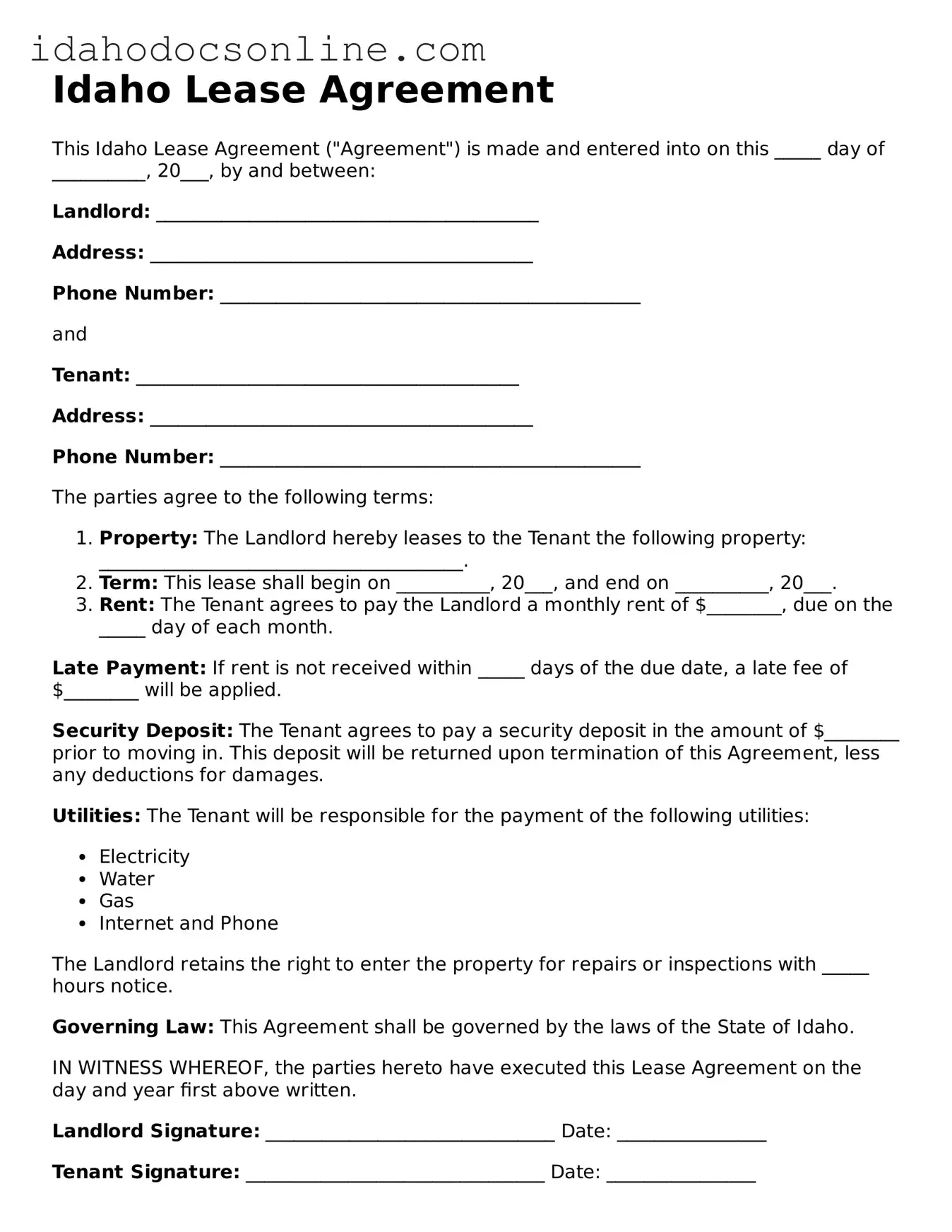Idaho Lease Agreement
This Idaho Lease Agreement ("Agreement") is made and entered into on this _____ day of __________, 20___, by and between:
Landlord: _________________________________________
Address: _________________________________________
Phone Number: _____________________________________________
and
Tenant: _________________________________________
Address: _________________________________________
Phone Number: _____________________________________________
The parties agree to the following terms:
- Property: The Landlord hereby leases to the Tenant the following property: _______________________________________.
- Term: This lease shall begin on __________, 20___, and end on __________, 20___.
- Rent: The Tenant agrees to pay the Landlord a monthly rent of $________, due on the _____ day of each month.
Late Payment: If rent is not received within _____ days of the due date, a late fee of $________ will be applied.
Security Deposit: The Tenant agrees to pay a security deposit in the amount of $________ prior to moving in. This deposit will be returned upon termination of this Agreement, less any deductions for damages.
Utilities: The Tenant will be responsible for the payment of the following utilities:
- Electricity
- Water
- Gas
- Internet and Phone
The Landlord retains the right to enter the property for repairs or inspections with _____ hours notice.
Governing Law: This Agreement shall be governed by the laws of the State of Idaho.
IN WITNESS WHEREOF, the parties hereto have executed this Lease Agreement on the day and year first above written.
Landlord Signature: _______________________________ Date: ________________
Tenant Signature: ________________________________ Date: ________________
